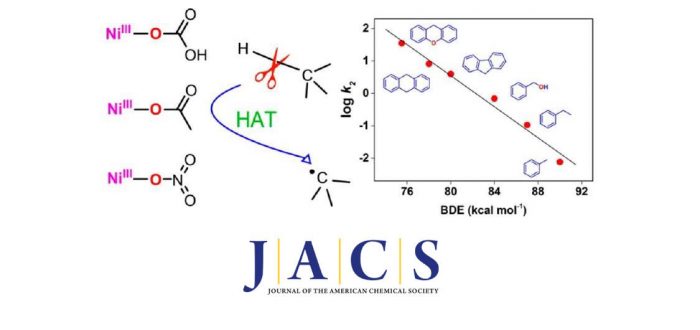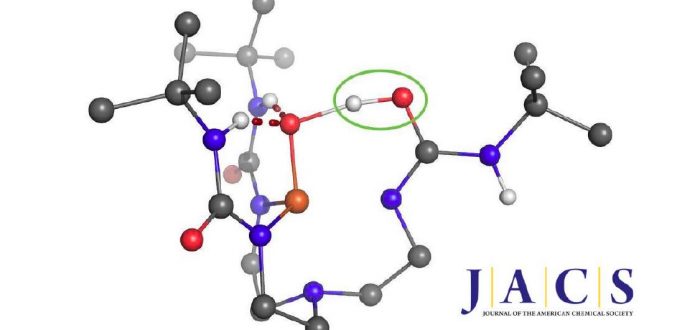Two metastable NiIII complexes, [NiIII(OAc)(L)] and [NiIII(ONO2)(L)] (L = N,N’-(2,6-dimethylphenyl)-2,6-pyridinedicarboxamidate, OAc = acetate), were prepared, adding to the previously prepared [NiIII(OCO2H)(L)], with the purpose of probing the properties of terminal late-transition metal oxidants. These high-valent oxidants were prepared by the one-electron oxidation of their NiII precursors ([NiII(OAc)(L)]? and [NiII(ONO2)(L)]?) with tris(4-bromophenyl)ammoniumyl hexachloroantimonate. Fascinatingly, the reaction
- sec.iqcc@udg.edu
- +34 972 41 83 57
Tag: JACS
One of the Plenary Speakers of the Girona Seminar, Prof. Borovik (UC Irvine), asked Prof. Swart for his help in understanding where the proton goes in a high-valent “Fe(IV)-hydroxo” complex. Together with Adrià Romero, they were able to figure out that there were four viable possibilities where the proton would be either at the “oxo”-oxygen,
Terminal high-valent metal–oxygen species are key reaction intermediates in the catalytic cycle of both enzymes (e.g., oxygenases) and synthetic oxidation catalysts. While tremendous efforts have been directed toward the characterization of the biologically relevant terminal manganese–oxygen and iron–oxygen species, the corresponding analogues based on late-transition metals such as cobalt, nickel or copper are relatively scarce.



